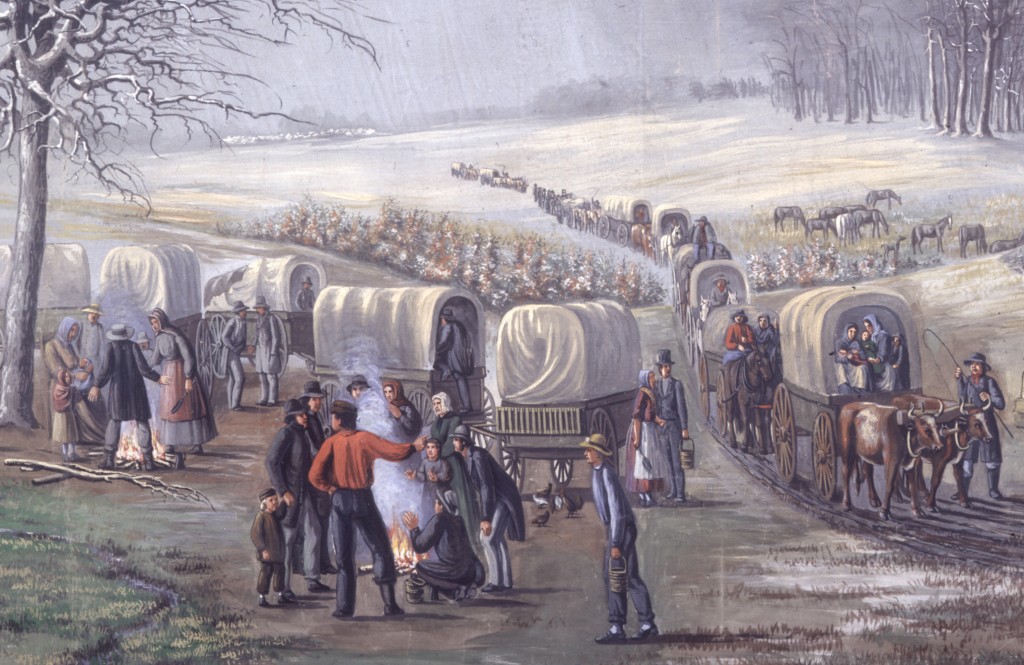
Church history artist C.C.A. Christensen’s “Moving Pictures” panorama of early Latter-day Saint depictions is on display at BYU’s Museum of Art. The exhibit of 22 church history scenes based off of accounts from early church members is on display until early October. The panorama is owned by the museum and is put on display about every 10 years.
The museum has 22 of the original 23 paintings from the panorama. Christensen created the paintings and sewed them together like a “vertical scroll.” He presented them like a panorama, or what would serve as a precursor to today’s motion picture.
Christensen traveled with the 10-foot-wide and almost-7-foot-tall panorama and set up a frame with curtains around it, using stage lights to give his show a theatrical effect. He read off a script he wrote, narrating each of his paintings to dramatize the display.
The scenes depict early LDS Church history between the time of Joseph Smith’s First Vision to the time the Saints reached the Salt Lake Valley.
“‘The Mormon Panorama’ by C.C.A. Christensen is a really unique work of art,” said Museum of Art Curator of Religious Art Ashlee Whitaker. “They’re really interesting portrayals of some of the events that the Saints experienced.”
Christensen was a Danish convert to the Church, joining in 1850. He pulled a handcart to Salt Lake City, but he did not experience many of the early church events shown in his depictions.
He created his body of work largely from eyewitness accounts, conducting interviews with early Saints who had been in Missouri and Nauvoo. He intended for the panorama to help teach young people who did not experience many of those events about early church history.

“C.C.A. wanted the young people of the church in his day … to know the stories and to see the sacrifice that the early Saints had experienced,” Whitaker said, “because a lot of these young people hadn’t pulled handcarts; they hadn’t been through the persecutions of Missouri.”
Panoramas like Christensen’s were quite popular during the 19th century, often depicting true stories to audiences, much like movies do today.
“It was more than just seeing paintings,” Whitaker said, “so he wanted to create a really powerful viewing experience.”
The paintings in the museum have been separated but still follow the narrative of Christensen’s original panorama. Audiences will follow the paintings the way Christensen would have shown it.
“It’s really fun because the paintings are all together,” said Museum of Art employee Erin Kolu.
“C.C.A. was intentionally wanting to create a really meaningful and testimony-building experience,” Whitaker said. “They’re insightful — they might teach audience members a thing or two about church history that they didn’t know.”
Whitaker also spoke of the paintings’ historical value. “They’re a cool example of early American art, and it’s rare to have a group of paintings like these still together, and we have them here at BYU.”




